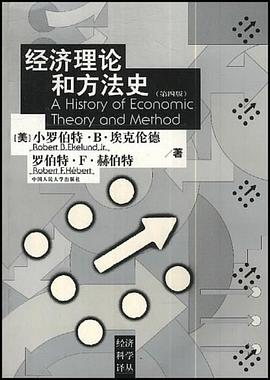内容简介
《改变心理学的40项研究》的独到之处在于填补了心理学书籍和心理学研究之间的沟壑,从历史的角度展示了心理学史上最有名的40项研究,并介绍了这些研究的后续进展和相关研究。
自1992年初版以来,本书一直是备受推崇的畅销书,长期位居美国亚马逊心理学类TOP100之列。作者罗杰·霍克不仅是一位心理学家,而且也是位优秀的教育家和作家,他用自己简练的思维和生动的语言,将“枯燥的”心理学经典研究变成了一个又一个“引人入胜”的故事。阅读此书,会让你感到心理学将不再“枯燥”,不再“远离实际”,也不再“高不可攀”。同时,阅读这些经典研究,还会让你折服于心理学大师们的绝妙思路和天才的想法。
《改变心理学的40项研究》第7版进行了许多重要和实质性的修订,新增了两个具有重大影响力的研究,一项研究有关人脑对颜色的分类;另一项是更为近期的研究,关于如何使用磁共振成像(MRI)观察大脑活动。并且新版本更新了近期应用的内容。此外,更新了每篇研究报告中的“近期应用”,反映了进入21世纪以来这40项研究被大量引用的情况,由此你将体会到这些研究在心理学发展中均有着举足轻重的地位。为了满足广大读者的需求,特引入英文版,供喜爱阅读英文原书的读者研读,进一步体验心理学研究的美妙。
......(更多)
作者简介
罗杰·霍克(Roger R. Hock) 博士是美国门多西诺学院(Mendocino College)的心理学教授,在心理学方面有多年教学经验。在教学过程中,他发现大多数心理学教科书因篇幅有限,无法详细介绍作为学科基础的研究过程,于是筹备本书以填补教科书与科学研究之间的沟壑。1992年出版本书的第1版之后,好评如潮且备受关注。霍克站在学科发展的高度,纵观心理学研究的发展历程,精心筛选出对心理学发展影响最大、文献引用较多且至今仍受关注的40项研究,范围涵盖广泛,介绍全面详实。
......(更多)
目录
PREFACE 11
CHAPTER I THE BIOLOGICAL BASIS OF HUMAN BEHAVIOR 19
READING 1: ONE BRAIN OR TWO? 19
Gazzaniga, M. S. (1967). The split brain in man. Scientific American, 217(2),24–29.
READING 2: MORE EXPERIENCE = BIGGER BRAIN 30
Rosenzweig, M. R., Bennett, E. L., & Diamond, M. C. (1972). Brain changes in response to experience. Scientific American, 226(2), 22–29.
READING 3: ARE YOU A “NATURAL”? 37
Bouchard, T., Lykken, D., McGue, M., Segal, N., & Tellegen, A. (1990). Sources of human psychological differences: The Minnesota study of twins reared apart. Science, 250, 223–229.
READING 4: WATCH OUT fOR THE VISUAL CLIFF! 45
Gibson, E. J., & Walk, R. D. (1960). The “visual cliff.” Scientific American, 202(4), 67–71.
CHAPTER II CONSCIOUSNESS AND THE SENSES 53
READING 5: TAKE A LONG LOOK 54
Fantz, R. L. (1961). The origin of form perception. Scientific American, 204, 61–72.
READING 6: TO SLEEP, NO DOUBT TO DREAM . . . 60
Aserinsky, E., & Kleitman, N. (1953). Regularly occurring periods of eye mobility and concomitant phenomena during sleep. Science, 118, 273–274.
Dement, W. (1960). The effect of dream deprivation. Science, 131, 1705–1707.
READING 7: AS A CATEGORY, IT’S A NATURAL 67
Rosch, Eleanor H. (1973). Natural categories. Cognitive Psychology, 4, 328–350.
READING 8: ACTING AS IF YOU ARE HYPNOTIZED 75
Spanos, N. P. (1982). Hypnotic behavior: A cognitive, social, psychological perspective. Research Communications in Psychology, Psychiatry, and Behavior, 7, 199–213.
CHAPTER III CONDITIONING AND LEARNING 83
READING 9: IT’s NOT JUST ABOUT SALIVATING DOGS! 83
Pavlov, I. P. (1927). Conditioned reflexes. London: Oxford University Press.
READING 10: lITTlE EMOTIONAL ALBERT 90
Watson, J. B., & Rayner, R. (1920). Conditioned emotional responses. Journal of Experimental Psychology, 3, 1–14.
READING 11: KNOCK WOOD! 96
Skinner, B. F. (1948). Superstition in the pigeon. Journal of Experimental Psychology, 38, 168–172.
READING 12: SEE AGGRESSION . . . DO AGGRESSION! 103
Bandura, A., Ross, D., & Ross, S. A. (1961). Transmission of aggression through imitation of aggressive models. Journal of Abnormal and Social Psychology, 63, 575–582.
CHAPTER IV COGNITION, MEMORY, AND INTELLIGENCE 111
READING 13: WHAT YOU EXPECT IS WHAT YOU GET 111
Rosenthal, R., & Jacobson, L. (1966). Teachers’ expectancies: Determinates of pupils’ IQ gains. Psychological Reports, 19, 115–118.
READING 14: JUST HOW ARE YOU INTELLIGENT? 118
Gardner, H. (1983) Frames of mind: The theory of multiple intelligences. New York: Basic Books.
READING 15: MAPS IN YOUR MIND 128
Tolman, E. C. (1948). Cognitive maps in rats and men. Psychological Review, 55, 189–208.
READING 16: THANKS FOR THE MEMORIES! 135
Loftus, E. F. (1975). Leading questions and the eyewitness report. Cognitive Psychology, 7, 560–572.
CHAPTER V CHANGES OVER THE HUMAN LIFESPAN 144
READING 17: DISCOVERING lOVE 144
Harlow, H. F. (1958). The nature of love. American Psychologist, 13, 673–685.
READING 18: OUT Of SIGHT, BUT NOT OUT OF MIND 152
Piaget, J. (1954). The development of object concept. In J. Piaget, The construction of reality in the child (pp. 3–96). New York: Basic Books.
READING 19: HOW MORAL ARE YOU? 161
Kohlberg, L. (1963). The development of children’s orientations toward a moral order: Sequence in the development of moral thought. Vita Humana, 6, 11–33.
READING 20: IN CONTROL AND GLAD OF IT! 168
Langer, E. J., & Rodin, J. (1976). The effects of choice and enhanced personal responsibility for the aged: A field experiment in an institutional setting. Journal of Personality and Social Psychology, 34, 191–198.
CHAPTER VI MOTIVATION AND EMOTION 176
READING 21: A SEXUAL MOTIVATION 176
Masters, W. H., & Johnson, V. E. (1966). Human sexual response. Boston: Little, Brown.
READING 22: I CAN SEE IT ALL OVER YOUR FACE! 186
Ekman, P., & Friesen, W. V. (1971). Constants across cultures in the face and emotion. Journal of Personality and Social Psychology, 17, 124–129.
READING 23: WATCHING YOUR EMOTIONS? 193
Ross, P. (2003). Mind readers. Scientific American, 289(3), 74–77.
READING 24: THOUGHTS OUT OF TUNE 199
Festinger, L., & Carlsmith, J. M. (1959). Cognitive consequences of forced compliance. Journal of Abnormal and Social Psychology, 58, 203–210.
CHAPTER VII PERSONALITY 207
READING 25: ARE YOU THE MASTER OF YOUR FATE? 208
Rotter, J. B. (1966). Generalized expectancies for internal versus external control of reinforcement. Psychological Monographs, 80, 1–28.
READING 26: MASCULINE OR FEMININE . . . OR BOTH? 216
Bem, S. L. (1974). The measurement of psychological androgyny. Journal of Consulting and Clinical Psychology, 42, 155–162.
READING 27: RACING AGAINST YOUR HEART 226
Friedman, M., & Rosenman, R. H. (1959). Association of specific overt behavior pattern with blood and cardiovascular findings. Journal of the American Medical Association, 169, 1286–1296.
READING 28: THE ONE, THE MANY 233
Triandis, H., Bontempo, R., Villareal, M., Asai, M., & Lucca, N. (1988). Individualism and collectivism: Cross-cultural perspectives on self-ingroup relationships. Journal of Personality and Social Psychology, 54, 323–338.
CHAPTER VIII PSYCHOLOGICAL DISORDERS 243
READING 29: whO’S CRAZY HERE, ANYWAY? 243
Rosenhan, D. L. (1973). On being sane in insane places. Science, 179, 250–258.
READING 30: YOU’RE GETTING DEFENSIVE AGAIN! 251
Freud, A. (1946). The ego and the mechanisms of defense. New York: International Universities Press.
READING 31: LEARNING TO BE DEPRESSED 258
Seligman, M. E. P., & Maier, S. F. (1967). Failure to escape traumatic shock. Journal of Experimental Psychology, 74, 1–9.
READING 32: CROWDING INTO THE BEHAVIORAL SINK 265
Calhoun, J. B. (1962). Population density and social pathology. Scientific American, 206(3), 139–148.
CHAPTER IX THERAPY 274
READING 33: CHOOSING YOUR PSYCHOTHERAPIST 274
Smith, M. L., & Glass, G. V. (1977). Meta-analysis of psychotherapy outcome studies. American Psychologist, 32, 752–760.
READING 34: RELAXING YOUR FEARS AWAY 280
Wolpe, J. (1961). The systematic desensitization treatment of neuroses. Journal of Nervous and Mental Diseases, 132, 180–203.
READING 35: PROJUECTIONS OF WHO YOU ARE 287
Rorschach, H. (1942). Psychodiagnostics: A diagnostic test based on perception. New York: Grune & Stratton.
READING 36:PICTURE THIS! 294
Murray, H. A. (1938). Explorations in personality (pp. 531–545). New York: Oxford University Press.
CHAPTER X HUmAN INTERACTION AND SOCIAL BEHAvIOR 302
READING 37: A PRISON BY ANY OTHER NAME . . . 303
Zimbardo, P. G. (1972). The pathology of imprisonment. Society, 9(6), 4–8. Haney, C., Banks, W. C., & Zimbardo, P. G. (1973). Interpersonal dynamics in a simulated prison. International Journal of Criminology & Penology, 1, 69–97.
READING 38: THE POWER OF CONFORMITY 310
Asch, S. E. (1955). Opinions and social pressure. Scientific American, 193(5), 31–35.
READING 39: TO HELP OR NOT TO HELP 315
Darley, J. M., & Latané, B. (1968). Bystander intervention in emergencies: Diffusion of responsibility. Journal of Personality and Social Psychology, 8, 377–383.
READING 40: OBEY AT ANY COST? 324
Milgram, S. (1963). Behavioral study of obedience. Journal of Abnormal and Social Psychology, 67, 371–378.
AUTHOR INDEX 334
SBUJECT INDEX 339
......(更多)
读书文摘
......(更多)






